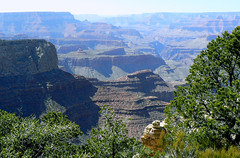De Re Metallica - The Medieval Book of Mining and Metallurgy
Destination Arizona
B. Thomas Cooper
Editor
Originally published in 1556, Georgius Agricola's groundbreaking book De Re Metallica remained the leading scientific journal of mining and metallurgy for over two hundred years. It was the first book about mining to be based on field research and observation. The massive tome was also the first to offer detailed illustrations of the various, highly specialized mining techniques, relevant to the period.
Agricola was born March 24th, 1494, arriving on the threshold of the Renaissance. De Re Metallica contains an unprecedented volume of material on alluvial mining, surveying, smelting, alchemy and more, and provides an otherwise unavailable glimpse into the world of medieval mining.
Georgius Agricola passed away on November 23rd, 1555 at the age of 61. Agricola had completed writing De Re Metallica by 1550, but the book did not go to press until 1553. Ironically, Agricola did not live to see his masterful volume published.
In 1912, Herbert Hoover and his wife Lou Henry Hoover translated De Re Metallica from it's original Latin text into English. This new edition was made available only in very limited copies, and was quickly bought up by libraries, historians and book collectors. Long out of print, this rare edition has itself grown in value. In 1950, the book was once again published in hardback, including all 289 of the original woodcut illustrations. These unusual, and highly detailed drawings offer a glimpse into the daily lives of medieval mining communities, and the curious devices they contrived.
Much credit is due Agricola, as his contributions to the sciences of the ages is without precedent. He is credited with advancements in Geology, Mineralogy, Mining Engineering and much more. Agricola was a scientist. He had little use for alchemy, and those who would be alchemists. He explored soil mechanics, tunneling procedures, and even expounded on a simple but profound understanding of potential dangers permeating the ground, and the release of deadly gasses, which he referred to as exhales.
The world has changed dramatically since the first publishing of De Re Metallica, as has the science of mining and metallurgy. Still, Agricola's work remains an irreplaceable scientific journal and indeed, one of a kind. The book is highly recommended to anyone interested in the history of medieval mining. The book can be difficult to find, but don't fret, copies are available. If you have trouble locating one right away, you just may need to do a little digging.
Destination Arizona
Labels: B. Thomas Cooper, brad cooper, De Re Metallica, destination arizona, Georgius Agricola, metallurgy, mining


![Validate my Atom 1.0 feed [Valid Atom 1.0]](http://feedvalidator.org/images/valid-atom.png)
